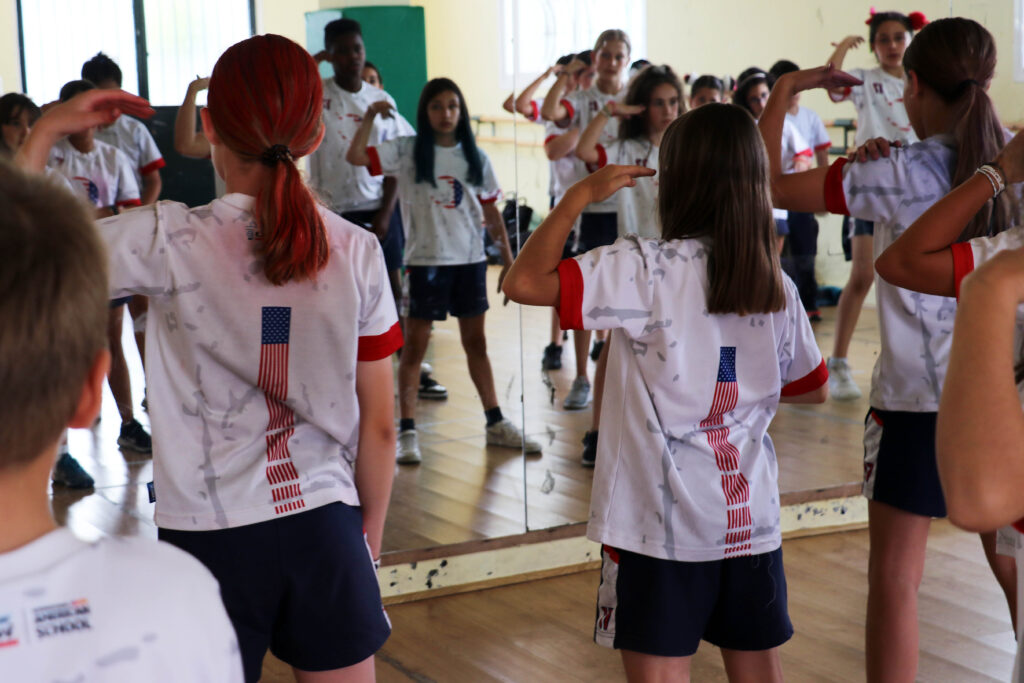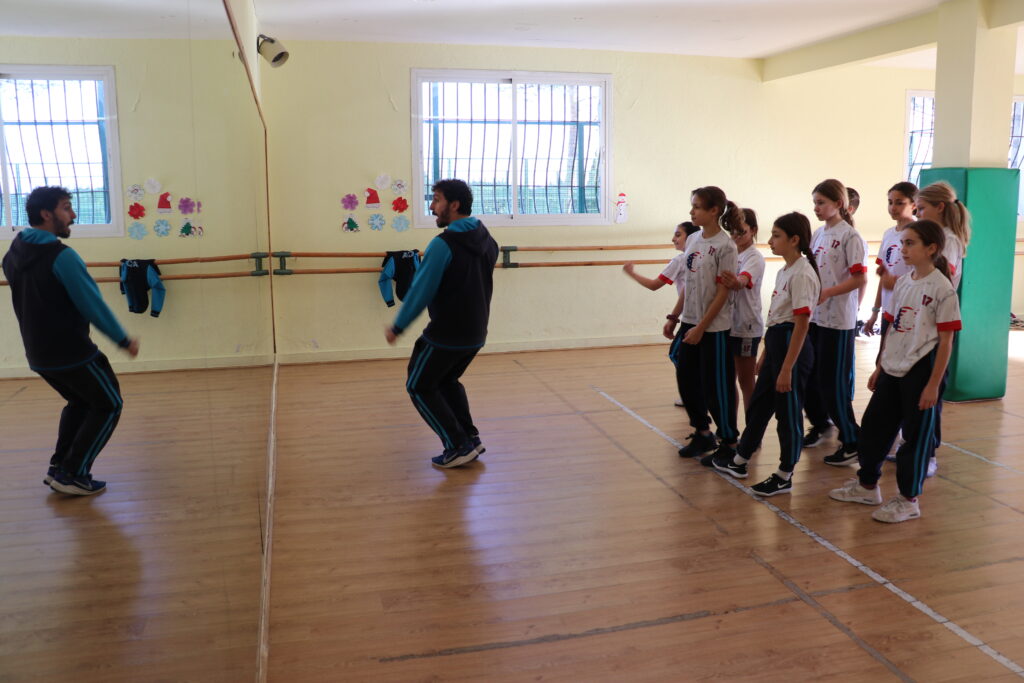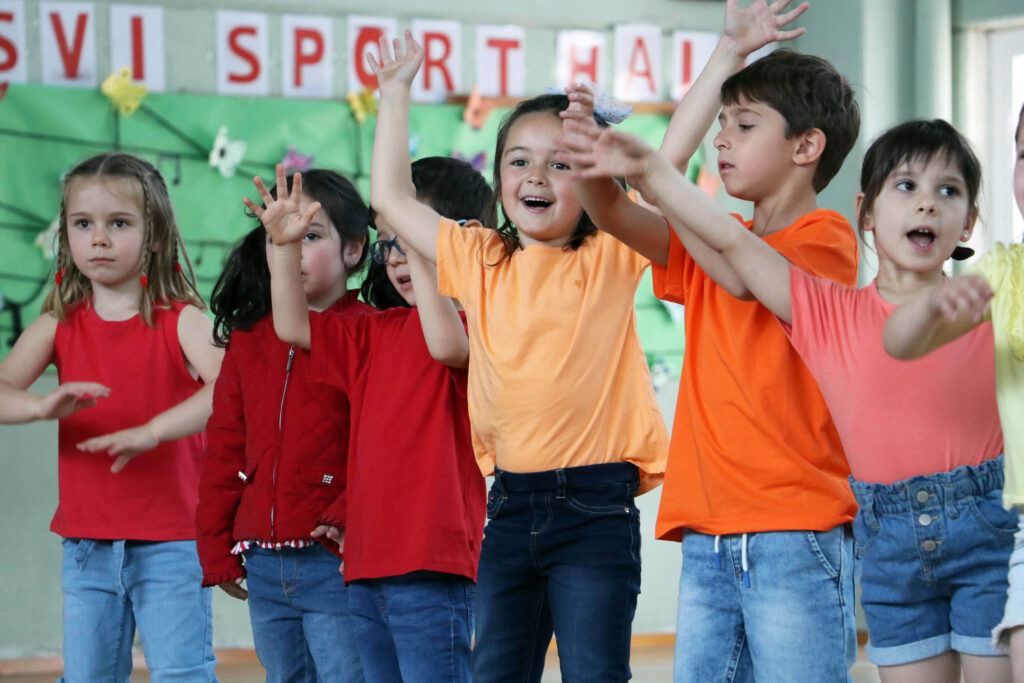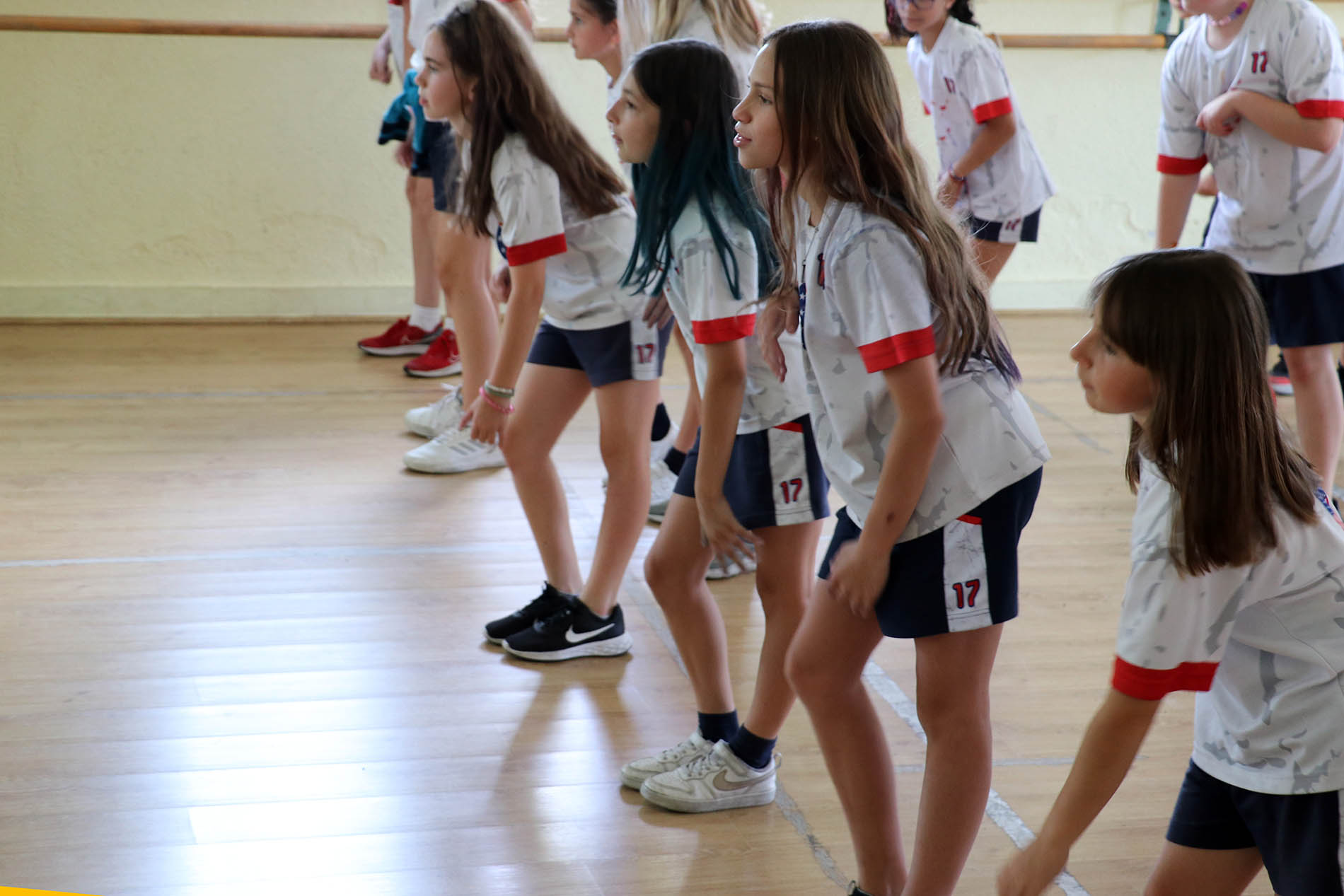El baile es una actividad divertida que puede aportar numerosos beneficios a los niños. Te contamos algunos de los beneficios del baile en edad infantil.
5 beneficios del baile en edad infantil:
1 - Mejor condición física
Además de ser una forma divertida de hacer ejercicio, el baile puede mejorar la salud física y mental de los niños, ayudándoles a desarrollar habilidades sociales y cognitivas.
Uno de los principales beneficios del baile en edad infantil es que es una excelente manera de mantenerse activo y mejorar la condición física. Los movimientos y coreografías que se realizan durante una clase de baile ayudan a los niños a mejorar su resistencia, flexibilidad, coordinación y equilibrio. Esto no solo es importante para mantener una buena salud física, sino también para prevenir lesiones y mejorar el rendimiento en otras actividades deportivas.

2 - Desarrollo cognitivo
El baile también puede tener un impacto positivo en el desarrollo cognitivo de los niños. Por ello, es importante que los niños desarrollen su psicomotricidad desde edades tempranas.
A través del aprendizaje de pasos y coreografías, los niños aprenden a memorizar secuencias, a seguir instrucciones y a coordinar sus movimientos con la música. Esto puede mejorar su capacidad de concentración, su memoria y su atención, habilidades que pueden ser útiles en el colegio y en la vida diaria. Aprenderse una coreografía de memoria, también es una buena práctica para ejercitar el la mente.

3 - Desarrollo de la creatividad
Otro de los beneficios del baile en edad infantil es su capacidad para fomentar la creatividad y la expresión artística. Los niños pueden explorar su creatividad a través de la música, el movimiento y la improvisación, lo que puede ayudarles a desarrollar su capacidad de expresión y comunicación. Esto les permite expresarse de manera más efectiva y confiada, tanto dentro como fuera del aula.
4 - Beneficios sociales
El baile también puede ser una actividad socialmente beneficiosa para los niños. A través de las clases de baile, pueden conocer a otros niños con intereses similares, lo que puede ayudarles a desarrollar habilidades sociales y de comunicación. Además, el baile en grupo puede ayudar a fomentar el trabajo en equipo y la colaboración, habilidades importantes para el éxito en cualquier ámbito de la vida.
5 - Mejora de la autoestima
Por último, el baile puede tener un efecto positivo en la autoestima y la confianza de los niños. A medida que los niños aprenden nuevas habilidades y mejoran en el baile, se sienten más seguros y satisfechos con su progreso. Además, el baile también ayuda a mejorar la postura y la conciencia corporal, lo que hace que los niños se sientan más cómodos y seguros con su propio cuerpo.
Beneficios del baile en diferentes edades
El baile no solo es beneficioso en edades tempranas, sino que se trata de una actividad beneficiosa para toda la vida.
En los adolescentes, el baile puede proporcionar numerosos beneficios también. Uno de los beneficios principales del baile en los adolescentes es su capacidad para mejorar la salud mental y emocional. Durante la adolescencia, los jóvenes pueden experimentar una amplia gama de emociones y estrés relacionado con la escuela, las relaciones y otros desafíos de la vida.
El baile puede ayudar a los adolescentes a liberar el estrés y la tensión emocional a través de la expresión física y la creatividad.

Clases de baile en Casvi Tres Cantos
En Casvi International American School, el baile forma parte del programa curricular. En Educación Infantil, los alumnos empiezan a indagar sobre las formas de expresión de ideas, emociones y sentimientos a través de la danza y la expresión corporal. Nuestro profesor especializado en danza ayuda a los alumnos en edades tempranas a conectar diferentes emociones con variados estilos de baile y movimiento.
En cursos superiores, los alumnos aprenden a ser capaces de reproducir coreografías en grupo y a seguir expresándose a través del movimiento y el baile, de una manera saludable y divertida.



